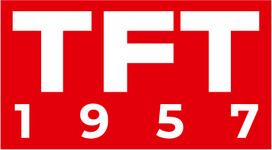Dielectric has changed the game for high-power, single-channel applications and adjacent channels combined with its new Single-Mode Filter.
Used as a combiner, the new high-power UHF filter is built for two adjacent TV transmission systems with a capacity of 60 kW TPO per channel and supplies additional power capacity for broadband applications. It can also be used as a single-channel 80 kW reflective filter, making it an economical alternative to the traditional dual-mode Constant Impedance Filter (CIF) or the repack waveguide tunable CIF. The first orders are in production and ship in October.
Dielectric’s Single-Mode Filter reduces the number of components required for 80 kW applications. Dielectric’s innovation uses a reflective design approach versus the CIF approach, which requires two filters and input and output hybrids. The reduction in hardware also reduces the installation footprint — a substantial benefit for broadcasters with limited RF facility space. The fact that the filter is single-mode means it requires very little parts to make it work, which yields reliability for broadcasters.
The timing of the innovation is helpful for broadcasters planning their ATSC 3.0 systems. According to Cory Edwards, Director of OEM, Distributor and Southeast Asia Sales, broadcasters are looking for solutions that can handle more average and peak powers.
“The ATSC 3.0 standard adds a stronger vertical polarization element than ATSC 1.0 to deliver NextGenTV broadcasts more effectively to mobile devices,” said Edwards. “That ‘V-Pol’ element requires the broadcaster to send more power through the transmitter, which results in a much higher amount of voltage in the first filter cavity. That problem escalates when you start to combine adjacent channels.”
Edwards notes that while the single-mode filters optimize power efficiency for ATSC 3.0 systems, they share the same performance efficiency as Dielectric’s waveguide dual-mode filters.
“The losses in our reflective and waveguide filters are very low across the board,” said Edwards. “The single-mode filter provides a more economical option for very high-power UHF broadcasters, and a more robust solution for ATSC 3.0 systems.”









